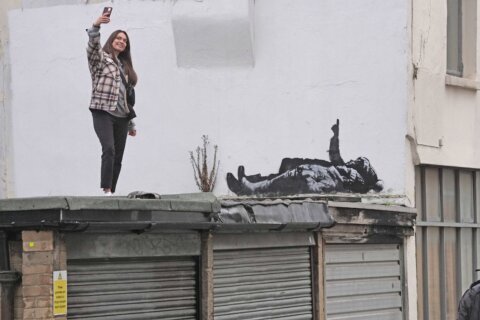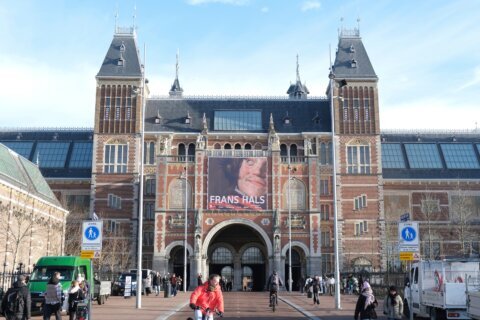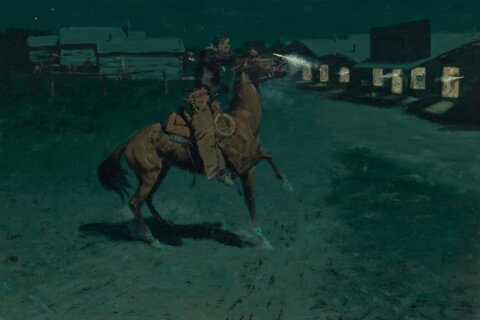ATLANTA (AP) — The sculpted clay was dry and the bronze would soon be cast, but artist Martin Dawe still found himself waking with a start before dawn, worried that he didn’t get the details of the famous man’s face exactly right.
On Monday, Dawe will find out if he succeeded when officials unveil his statue of civil rights leader Martin Luther King Jr. on the Georgia state Capitol’s grounds for the 54th anniversary of the March on Washington.
Getting to this point was a three-year struggle over multiple hurdles. Officials had to negotiate with King’s family for the right to use his image. Then an artist was selected for the project, only to be killed in a motorcycle accident. After a lengthy screening, Dawe was chosen to replace him.
Then came the artistic challenge.
“It’s the most difficult portrait I’ve ever done in my whole career,” Dawe said this month at his Atlanta studio. “He has very elusive features. He has a very distinct profile but no over strong characteristic like some historical figures.”
Dawe knew other tributes to King had been criticized and he set one goal: Make the 8-foot (2.44-meter) statue look like the man.
People have their own image of King, Dawe said, from a favorite photo perhaps or a personal glimpse caught in childhood. He said he’s prepared for mixed reactions because of that history. But he’s still hoping most will conclude: “That looks like him.”
___
A reflection of epochal changes, the civil rights leader’s statue is going up in his Southern hometown at a time when monuments honoring Civil War Confederates are coming down in many other places across the South.
Less than two miles from King’s birthplace, Georgia’s state Capitol has held only one representation of the civil rights icon and Nobel laureate since 1974 — a painting. Black lawmakers lobbied without success for years to install a statue on the grounds commemorating him.
Then, in late 2013, Republican Gov. Nathan Deal ordered the statue of white supremacist Tom Watson — a Georgia political leader in the late 1800s and early 1900s — removed from the Capitol lawn.
On the 2014 national holiday bearing King’s name, Deal visited the historic Ebenezer Baptist Church where King preached and promised to “find an appropriate way” to honor him at the Capitol.
King’s family is fiercely protective of his name, image, words and more. Within weeks, an attorney representing the estate warned the governor’s chief of staff that permission for such a statue would be required.
Lawmakers approved a resolution proposing the statue and Deal appointed Rep. Calvin Smyre, a black Democrat from Columbus and longest-serving member of the House, as a liaison to the family. The state and the King estate ultimately came to an agreement for the statue, at no cost.
Smyre said the estate never asked for a financial commitment to use King’s image and he thinks King’s children deserved to be involved.
“I can understand them wanting to make sure the things that people do that represent their father would be done in good order,” Smyre said this month.
Eric Tidwell, the estate representative, did not respond to several messages requesting comment from King’s estate on the project.
Meanwhile, Smyre and Republican Rep. Joe Wilkinson began seeking donors to cover the estimated $100,000 expense. By early July of 2015, King’s estate signed off on a design proposal from artist Andy Davis, whose statue of Ray Charles for a south Georgia city convinced state officials that he was the right pick.
But within days of getting the OK to start his work, Davis was fatally injured when an alleged drunk driver collided with his motorcycle. Officials had to start over.
It took almost a year to narrow down the hundreds of artist portfolios that poured in after Davis’ death, interview four finalists and select a new artist. That delay ballooned the cost to $300,000.
Last January, nearly three years after the statue was proposed, Dawe actually began crafting it.
For its stance, he already had a photo originally chosen by Davis. A fedora-wearing King is shown leaving a courthouse in Montgomery, Alabama, during the 1956 bus boycotts. He’s mid-stride, adding curve to his body in a way that reminds Dawe of classic Greek sculptures. His shoulders are squared under a suit and his left arm holds a stack of paper and an overcoat.
King’s face, though, took weeks of research. Dawe studied hundreds of photos and watched King’s speeches and interviews, along with every educational DVD he could find. He still felt something was missing. Then, buried in the extras section on one of those DVDs, Dawe found a brief video clip.
King has just given his famous “I Have a Dream” speech from the steps of the Lincoln Memorial in 1963. He stands, with the overcast sky lighting his face perfectly.
Dawe played the five or six seconds in a loop, examining the curves of King’s face and chin, his bone structure and the overall shape of his neck and head. This, he felt, was the key.
In the finished piece, Dawe aimed for an expression just short of a smile but “hopeful” and “deep in thought.” Once in place, the completed statue’s head will be turned slightly, gazing toward Martin Luther King Jr. Drive. Dawe hopes the slight tilt inspires viewers to ask themselves: “What is he thinking?”
Smyre, at least, said the final result was “well worth the efforts.”
“I’m ecstatic, I’m relieved,” he said. “This is something that’s overdue.”
___
Copyright © 2025 The Associated Press. All rights reserved. This material may not be published, broadcast, written or redistributed.







